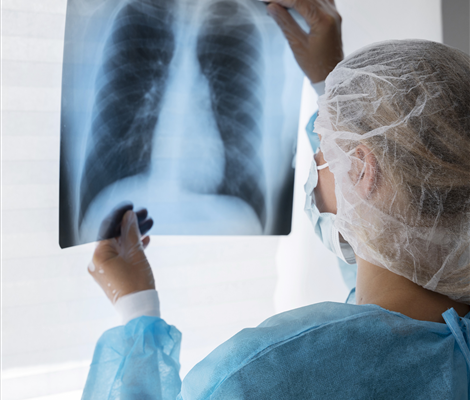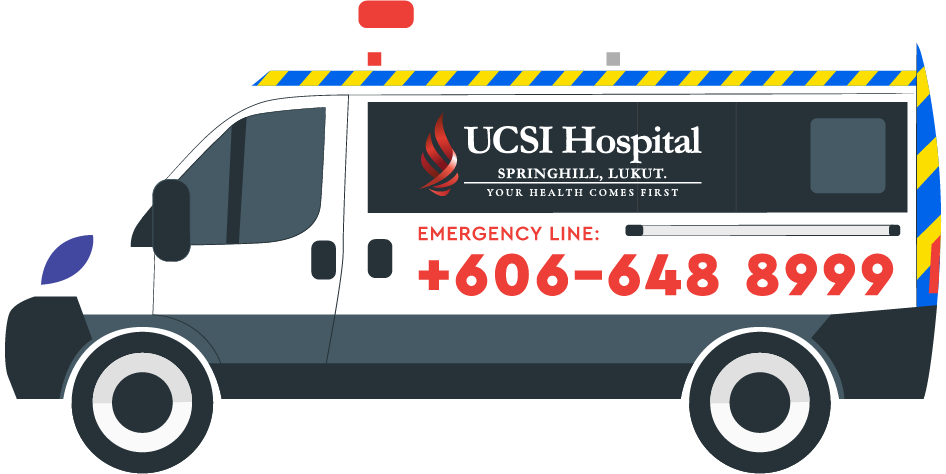
What is TB?
Tuberculosis, or TB, is a bacterial infection that usually infects the lungs. Other organs, such as the kidneys, spine, or brain may also be involved. TB is primarily spread from person to person in an airborne manner, such as when an infected person coughs or sneezes. It can also cause an active infection after a period of not being active in someone who was exposed at an earlier time.
There is a difference between being infected with the TB bacterium and having active tuberculosis disease.
The following are the stages of TB:
- Exposure. This happens when a person has been in contact with, or exposed to, another person who has TB. The exposed person will have a negative skin test, a normal chest X-ray, and no signs or symptoms of the disease.
- Latent TB infection. This happens when a person has TB bacteria in his or her body, but does not have symptoms of the disease. The infected person's immune system walls off the TB organisms, and the TB remains inactive throughout life in most people who are infected. This person would have a positive skin test, but a normal chest X-ray.
- TB disease. This describes the person who has signs and symptoms of an active infection. The person would have a positive skin test and a positive chest X-ray.
What Are the Symptoms of TB?
A person with latent, or inactive, TB will have no symptoms. You may still have a TB infection, but the bacteria in your body is not yet causing harm.
Symptoms of active TB include:
- A cough that lasts more than three weeks
- Loss of appetite and unintentional weight loss
- Fever
- Chills
- Night sweats
You may experience other symptoms related to the function of a specific organ or system that is affected. Coughing up blood or mucus (sputum) is a sign of in TB of the lungs. Bone pain may mean that the bacteria have invaded your bones.
These symptoms can also occur with other diseases, so it is important to see a healthcare provider and to let them find out if you have TB. If you think you have been exposed to TB, get a TB test.
How Is TB Diagnosed?
Your doctor will start by collecting a patient history to determine if you may have been exposed. During a physical exam, they will use a stethoscope to listen to your lungs and check the lymph nodes in your neck for swelling.
If your doctor suspects TB, they may order a skin or blood test.
The skin test is done by injecting a small amount of fluid called tuberculin into the skin in the arm. You will be told to return to the office within 48 to 72 hours to have a healthcare worker check the arm to see if a bump or an induration (thickening) of the skin has developed. It may be difficult to feel so an experienced healthcare worker should examine the reaction. The healthcare worker will measure the bump or induration and tell you if your reaction to the test is positive or negative. If it's positive, it usually means you have been infected with the TB germ. It does not tell whether you have developed clinically active TB disease. The skin test isn’t 100% accurate, meaning you may have a false-positive or a false-negative, so your doctor may order further testing regardless of the result.
The TB blood test measures how your immune system reacts to the germs that cause TB. This information will be used to more precisely confirm or rule out latent or active TB. It requires only one office visit.
If the skin or blood tests indicate the need for further analysis, your doctor may order a chest X-ray or CT scan to look for visible signs of TB in your lungs. They may also check your sputum (coughed-up mucus) for bacteria, to see whether you have clinically active TB disease and if so, which strain of TB you have. These tests can take one to two months before results are available.
How is TB treated?
Treatment may include:
- Short-term hospitalization
- For latent TB which is newly diagnosed: Usually a 6 to 12 month course of antibiotic called isoniazid will be given to kill off the TB organisms in the body. Some people with latent TB may be treated with a shorter course of 2 antibiotics for only 3 months.
- For active TB: Your healthcare provider may prescribe 3 or more antibiotics in combination for 6 to 9 months or longer. Examples include: isoniazid, rifampin, pyrazinamide, and ethambutol. People usually begin to improve within a few weeks of the start of treatment. After several weeks of treatment with the correct medicines, the person is usually no longer contagious, if treatment is carried through to the end, as prescribed by a healthcare provider.




UCSI Hospital Enquiry
We will revert to you asap
UCSI Hospital Enquiry
Hey there 👋
I'm here to help, so let me know what's up and I'll be happy to find a solution 🤓

